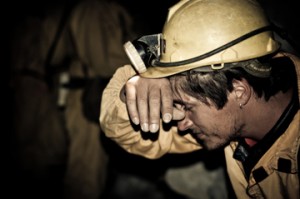
The risk of fatigue: How it affects workers and what to do about it
For workers expected to put in long, hard hours, fatigue is a very real safety hazard. The National Institute for Occupational Safety and Health (NIOSH) published a training resource aimed at reducing the risks for emergency responders and other workers in these situations.
According to NIOSH, taking preventative steps and catching emergency workers’ symptoms of fatigue can help cut down on safety risks. NIOSH said that during Hurricane Katrina, one third of the U.S. Coast Guard involved said that they were getting five hours or less of sleep every night, which tripled their risk for:
- depression
- slips, trips and falls
- muscle strains, and
- dehydration.
Getting between seven and eight hours of sleep each night is vital for workers’ mental and physical health, and not getting enough will result in sleep debt, which can only go away by catching up on sleep.
Trying to power through on little sleep just won’t work and could put your workers in danger.
See the signs
How can you tell if your workers are fading from fatigue? NIOSH listed five types of signs to look out for:
- Physical: Are your workers yawning, rubbing their eyes, slurring their speech or reacting slower than normal? Do they stare blankly into space for a few seconds, overcome by a brief sleep episode?
- Mental: Are your workers having a hard time concentrating or grasping new facts or motor skills? Are they hallucinating?
- Emotional: Have you noticed that your workers are unusually quiet or withdrawn? Have they stopped feeling motivated? Are they exhibiting inappropriate emotions for a given situation or acting particularly confused, anxious or irritated?
- Thinking: Are your workers exhibiting poor judgement and flawed logic? Have they failed to recognize effective solutions to problems? Do they not realize that they are doing their job poorly? Or have they begun to exhibit risk-taking behaviors?
- Communicating: Have your workers begun to misinterpret instructions?
How you can help
As the length of a shift increases, so do workers’ risks for injuries. NIOSH said that a 10-hour shift would increase the risk of an incident by 13%, and a twelve hour shift would increase the risk by 28 percent.
NIOSH recommended these tips to help emergency response workers combat fatigue while out in the field:
- Plan ahead by setting up work hours that will allow employees enough time to rest and get enough sleep once their shift is complete
- Provide workers with ten consecutive hours off every day to ensure that they get enough rest
- Establish brief breaks from work every one to two hours, since shorter, more frequent breaks will help prevent injuries more than fewer, longer ones will
- Look closely at workloads to make sure workers aren’t getting overworked
- Add rest days to the work cycle. NIOSH suggested one to two days following five 8-hour shifts or four 10-hour shifts, and two days for rest following three 12-hour shifts. If rest days won’t fit in with a tight schedule, allow response workers to have “no alarm days” where they wake up naturally without an alarm to get the sleep they need
- For workers who are temporarily working long hours, consider providing them with healthy food and drinks, nearby sleeping rooms, comfortable clothing and laundry services and healthcare and counseling. Ask workers if there is anything else you can provide for them as well
- If fatigued workers need a break, allow them to take one
- Set up a procedure to deal with fatigued workers who refuse to stop working
- Don’t pressure your workers to take on longer shifts
- Educate workers before they start working about the risks associated with on-the-job fatigue
- Implement a buddy system where workers keep an eye out for signs of fatigue in one another
- If you see that a worker is exhibiting signs of fatigue, send him to get some rest right away. Keeping the worker in the field could result in injuries, and
- Teach your workers some relaxation techniques to combat stress and help them fall asleep faster.
